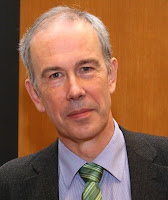This was the question posed by Dr. Kathryn Hadler in her talk at the inaugural event for the Camborne School of Mines' Women in Mining student chapter earlier in the month (posting of 15th March).
Kathryn has kindly sent to a summary of her talk, which is presented below:
I was invited by the newly formed Women in Mining Student Chapter at CSM to give a talk on women in mineral processing, given that it was International Women’s Day on Tuesday 8th March, the timing seemed particularly appropriate.
The International Mineral Processing Council (IMPC) currently has a female presence of 5% (i.e. Diana Drinkwater). Is this representative of the proportion of women in mineral processing (industry and academia)? What data do we have at our disposal to investigate this further?
Fortunately, the IMPC Commission on Education proves a good starting point, providing mineral processing graduate numbers by region, the proportion entering industry and the proportion that are female. Using these published numbers, an estimate (with an emphasis on the word estimate!) of the proportion of female mineral processing graduates entering industry can be calculated, and this turns out to be 14%, or 1 in 7.
Of course, we know that many people entering the industry do not have degrees specifically in mineral processing, however in the absence of any other data to hand, this seems like a reasonable place to start.
So, 14% of graduates entering the industry are female. How does this reflect industry and academia? Where does one find such data? Well, one assumption we can make is that people attending conferences are representative of the gender balance of industry and academia as a whole. Is this assumption valid? Well, there are limitations, but again, it seems a good place to start.
To investigate further, I took delegate lists from selected MEI conferences and categorised people by gender, industry/academia and geographical region. Before we launch into the results, here are some caveats: 1) People attending conferences are not necessarily from a technical background. 2) No account is made for seniority or position within industry/academia. 3) People enter academia from many disciplines (e.g. chemical engineering). 4) People often do not work in the same place from which they graduated. 5) The proportion of academics and industry delegates is unlikely to reflect reality, given that a conference will tend to attract a greater proportion of academics.
So let’s start with the most recent MEI conference; Flotation ’15 in Cape Town last November. There were 238 delegates, of which 65% were from industry and 40% were from Africa (predominantly South Africa). Of all delegates, 19% were female. This is encouraging; it is higher than the 14% female entering industry and much higher than the 5% represented on the IMPC. Separating further by academia and industry, 27% of academics attending the conference were female with 14.5% of industry folk being women. Breaking down the data by region, 45.5% of the academics from Africa were female, whereas 20% were female from Europe. On the other hand, only 12% of the industry delegates from Africa were women, compared to 17% from Europe. These are interesting figures; I am not going to discuss them in any detail here, but there is certainly variation by region, which is evident from all the data into which I looked.
The next question is ‘has this changed over time?’ Well, let’s compare the proportion of female delegates at three Flotation conferences (’03, ’07 and ’15), which is shown in Figure 1. The dashed horizontal line represents the proportion of female graduates entering industry (14%). It’s interesting to see that over time, the proportion of women in academia attending flotation conferences has increased, while there is no corresponding increase in those from industry, hovering around the 14-15% mark.
 |
| Variation of proportion of female delegates at Flotation '03, '07 and '15 |
Is flotation representative of other mineral processing sectors? We can compare it to any of the MEI conferences, however I’ve selected Process Mineralogy ‘14 and Comminution ‘14, both of which were held in Cape Town. You can see the results in Figure 2, where women account for a much greater proportion (38%) of the academic delegates in Process Mineralogy (although female industry delegates remain at around 15%), whereas Comminution seems to have attracted very few women in any sector. Perhaps this is reflected in the 5% that is represented on the IMPC?!
Overall, weighting the data for the number of delegates at the conferences, we end up with the following values from the 3 conferences:
• Overall Female delegates: 14.6%
• Female academic delegates: 18.8%
• Female industry delegates: 11.5%
Which brings us back to our figure of 1 in 7.
So, do these numbers seem realistic? Is it a cause for concern or does this point to a bigger issue about attracting into (and keeping) a greater diversity of people in the industry?
We would be interested in receiving your comments on Kathryn's summary.
Twitter @barrywills























